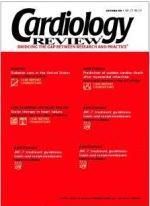Publication
Article
Cardiology Review® Online
Importance of blood pressure control in type 1 diabetes
Microalbuminuria is thought to be the earliest sign of nephropathy in type 1 and type 2 diabetes. The most important point by Wasi and colleagues (page 26) is that increased microalbuminuria may be linked with increased nocturnal blood pressure, despite normal daytime blood pressure, in type 1 diabetics.
The authors found that nocturnal hypertension preceded the development of microalbuminuria. For each 5-mm Hg increase in nighttime systolic blood pressure, the relative risk of microalbuminuria was 1.44 (95% confidence interval, 1.03—2.02). Conversely, patients with a normal blood pressure pattern at night had a 70% lower risk of developing microalbuminuria. Blood sugar control, as measured by glycosylated hemoglobin levels, was equally poor in those with and without an increase in nocturnal blood pressure.
Wasi and colleagues’ case report shows the importance of ambulatory blood pressure monitoring in type 1 diabetics. Although the patient had normal blood pressures during the day, her nighttime blood pressure had an abnormal pattern (0.9% of daytime blood pressure), and she had a significantly increased urinary albumin excretion.
The presence of microalbuminuria alerts the physician to the possibility of progressive nephropathy and requires appropriate treatment with an angiotensin-converting enzyme inhibitor or an angiotensin II receptor blocker (ARB). Both drug classes lower blood pressure and reduce urinary protein secretion. Either one would be a good choice for the patient in the case report. Both reduce protein excretion even when there is no increase in blood pressure.1
The Reduction of Endpoints in Non-insulin—dependent Diabetes Mellitus with Angiotensin II Antagonist Losartan (RENAAL) study used the ARB losartan in patients with type 2 diabetes to determine its effects on nephropathy.2 This therapy resulted in a significant decrease in the risk of the doubling of serum creatine, end-stage renal disease, and death compared with placebo. The study emphasizes the importance of reducing systolic blood pressure, with a consequent reduction in pulse pressure. This was the first time a blood pressure medication was shown to reduce the time
to end-stage renal disease. Most of the patients required several blood pressure medications in addition to losartan for systolic blood pressure management. The dihydropyridine calcium channel blocking agents worked well with losartan and were not deleterious.2
Conclusion
These studies and many others emphasize blood pressure control in all patients with diabetes. Most patients will require treatment with at least two or three medications to meet the guidelines of the Seventh Report of the Joint National Committee on Prevention, Detection, Evaluation, and Treatment of High Blood Pressure (JNC 7) of blood pressure below 130/80 mm Hg.3 Blood pressure control is as important as blood sugar regulation in diabetes. When an aggressive approach is taken, both reduce micro- and macrovascular complications.






